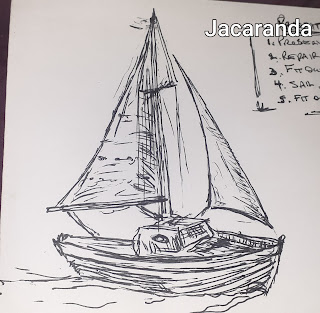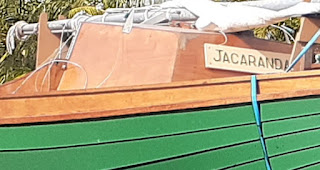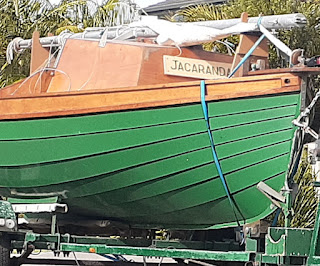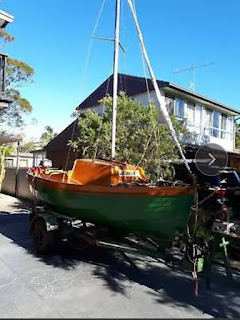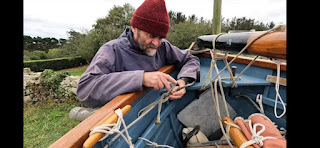Sea Anchor, Painting the Bilge
From "Tinkerbelle" by Robert Manry. When three wind rose to near gale levels, a sea anchor was deployed from the bow. 150' of 1/2" nylon warp attached to" an old army canvas bucket". A lighter line was attached to the bucket, 15' in length, attached to a buoy to add the bucket sinking too far. The rudder was also removed. With this set, Tinkerbelle drifted slowly downwind, advising breaking waves, and with a relatively steady motion. ÷ = / × + € I read online that sealing the bilges of wooden boats was best done with grey metal primer that contained "flakes of metal". Okay. Well three things; I couldn't ascertain whether Kill Rust Aluminium - No Primer Required actually contained aluminium flakes (but it did have Titanium Dioxide?), "Jacaranda's" bilge had already been sealed, mostly with varnish, but thirdly, the for'ard bilge, including the anchor well, had been primed with paint w




